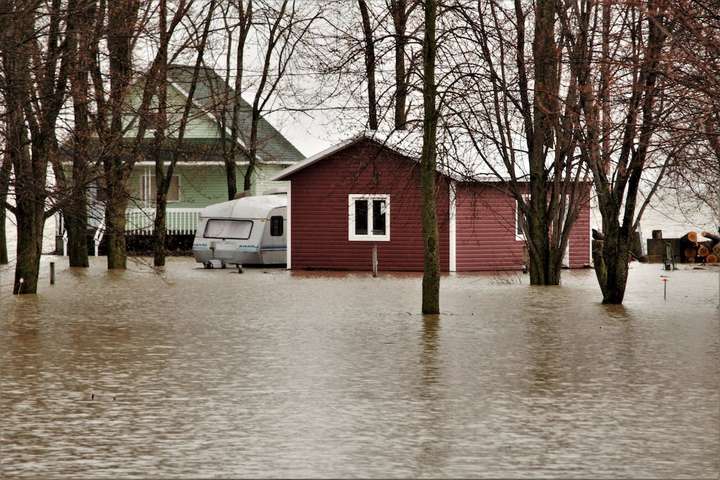Water damage is one of the worst fears of homeowners. Whether it’s due to a flood, a faulty ceiling, or a leaky pipe, failing to address water damage promptly can lead to serious issues. Prolonged exposure to water can weaken your home’s structure. It will cause mold growth, a potential health hazard, and may damage floors, furniture, and appliances, putting your family’s safety at risk.

For those living in cities prone to natural disasters like Sarasota, having a well-thought-out plan for water damage recovery is crucial. Restoring a house after water damage involves more than just redecoration. It requires a thorough inspection to ensure there are no underlying structural issues. Neglecting this can lead to more severe and expensive problems in the future.
With that said, let’s go through some useful restoration and recovery steps to revive your home after water damage:
Hire Professionals
Hiring professionals is a critical step in recovering your home from water damage. The skills and experience of water damage restoration experts are invaluable in restoring your home. These specialists have the right tools and knowledge to properly evaluate the damage and execute effective recovery plans. They expertly manage everything from initial water extraction to fixing damaged structures and stopping mold growth. This comprehensive approach does more than just revive the look of your home; it safeguards its safety and structural soundness.
Choosing one of the renowned Sarasota water damage restoration experts may help detect and resolve hidden problems, such as moisture trapped in walls or beneath floors. This is vital for a thorough recovery, ensuring your home is once again safe and comfortable. Opting for professional water damage restoration services is a smart decision for the well-being and durability of your home.
Get Rid of Standing Water to Avoid Damage
Removing standing water is crucial to avoid additional damage to your home. Time is of the essence, as standing water in your home can cause serious structural problems and lead to mold growth. Acting quickly to get rid of this water is key to protecting the structural integrity of your home. Using efficient water extraction techniques and equipment is vital in reducing the damage and preparing the groundwork for the restoration phase. This step is more than just managing damage; it’s about maintaining the long-term health of your home and creating a secure, dry setting for the restoration work that lies ahead.
Thorough Cleaning and Sanitization of Home
After the water is removed and the area is dry, the next important phase is cleaning and sanitizing. This step is crucial, especially if the water damage involves potentially contaminated sources like sewage or floodwaters. Begin by cleaning all affected surfaces with soap and water to remove dirt and remains. Then, follow up with a thorough sanitization process using appropriate disinfectants. This step is vital for ensuring that any bacteria or harmful viruses brought in by the water are eliminated. Pay special attention to porous materials that can mold germs and bacteria. These may require deep cleaning or, in severe cases, replacement.
Don’t forget hidden areas such as air ducts or crawl spaces, as these can often be overlooked. Ensuring thorough cleaning and sanitization helps restore your home to a safe and livable condition. It also protects your health and that of your family from potential hazards left behind by water damage.
Carefully Analyze the Electricity Outlets and HVAC Systems
If there was a lot of water in your home and that too at a high level, it could have entered electrical outlets, switches, appliances, and fixtures, creating a potentially hazardous situation. Therefore, you should call a qualified and experienced electrician to meticulously check all electrical outlets and appliances and repair any damage. However, remember, don’t switch on the main power in your house until you have confirmed that all electrical systems are safe.
Likewise, water may have entered the heat registers and ducts of your HVAC system. Therefore, it’s important to have this system thoroughly inspected by an HVAC expert to prevent any further issues.
Start Repairing the House with Smarter Choices This Time
After water damage, it’s crucial to make thoughtful decisions about repair. Start by assessing structural damage to walls, foundations, and supports, and invest in high-quality products and services for repairs.
The flooring, likely the most affected area, needs replacement. Opt for water-resistant materials like vinyl or tile, and ensure the installation is of the highest standard to prevent future issues. Once the ceiling and walls are completely dry, repaint them with mold-resistant paint. Replace any wooden cabinets or doors that are damaged; the wood tends to retain moisture and can rot over time. Also, repair any damaged windows and upgrade insulators.
Prevention and Future Protection
After addressing the immediate effects of water damage, it’s important to focus on prevention and future protection. This involves identifying and addressing any sensitivities in your home that could lead to future water damage. Regular maintenance is key. Ensure that your home’s plumbing is in good condition and promptly repair any leaks.
Clean and maintain gutters and drainpipes to prevent water accumulation around your home’s foundation. Consider installing water detectors in areas prone to water damage, like basements, near washing machines, or under sinks. These devices can alert you about the presence of moisture before it becomes a big problem.
Conclusion
Restoring your home after water damage is a multifaceted process that requires prompt action, careful planning, and the expertise of professionals. From removing standing water to addressing potential electrical and HVAC system issues, each step is crucial in mitigating damage and ensuring the safety and integrity of your home. Remember, the key to a successful recovery lies in addressing not just the immediate effects but also the hidden damages. By taking these comprehensive restoration and recovery steps, you can protect your home, preserve its value, and, most importantly, create a safe living environment for you and your family.

